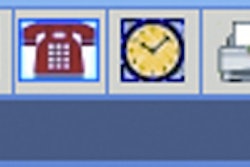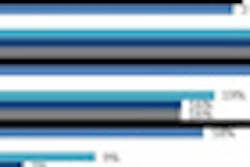A low-cost, low-tech centralized radiology notification system to convey nonurgent significant findings and amended reports is working well for both radiologists and physicians affiliated with a large teaching hospital in Sydney.
The "tsunami" system of Liverpool Hospital, which is managed by a centralized clerk working in the radiology department, was described in a poster presentation at RSNA 2012 in Chicago. The system was implemented in 2010 and has proved to be more effective than automated email notification, said radiologist Dr. Marion Dimigen.
Dimigen and colleagues analyzed the performance of the tsunami system between March 2010 and February 2012. During this time, 1,585 alerts were sent, reflecting 1.2% of the total number of radiology reports (129,824) prepared. From these, 500 consecutive alerts were analyzed with respect to the alert indication, the type of imaging modality, and the performance times of each of the two notification elements.
The majority (57%) of alerts were sent to hospital specialists, predominantly in the gastroenterology and trauma surgery departments. Emergency physicians received 34% of the total number of nonurgent significant findings or amended reports.
Alerts for CT (48%) and x-ray exams (43%) represented all but 9% of notifications. The majority of CT-related alerts reported suspicious lung nodules, and most x-ray alerts notified referring physicians of probable bone fractures.
Amended reports comprised 9% of notifications; all but 6% of these related to changes to a report prepared by a resident after attending radiologist review.
On average, radiologists notified the "tsunami clerk" within two to three days of preparing an initial report. The clerk notified referring physicians by phone or fax, depending on the physician's preference, in less than three hours.
The research group interviewed the clinical directors of the 10 most notified hospital specialties to determine whether they liked the system. In spite of its slowness, physicians said they were satisfied with the system.
Nine of the clinical directors felt that an automated email alert system would be difficult to implement or would not work as well. The director of the emergency department also preferred notification of both urgent and nonurgent findings by phone and/or fax because it reduced the chance of the alerts being overlooked. Also, phone and/or fax notification was effective in terms of the way the emergency department operated.
Efforts are under way to improve the efficiency of the system, as well as to implement changes suggested by the clinical directors during the feedback interviews, Dimigen said.



















